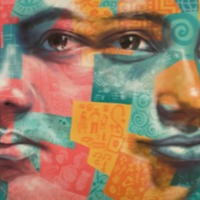
Nasreen Sheikh
There are an estimated almost 8 million people living in modern slavery in India (GSI 2018). India has a population of more than 1.3 billion people, there are still at least 270 million people living on less than US$1.90 per day. While laws, systems and attitudes regarding key 'fault lines' such as the caste system, gender and feudalism are rapidly changing, social change of this depth and scale necessarily takes time. In this context, it is perhaps unsurprising that existing research suggests that all forms of modern slavery continue to exist in India, including intergenerational bonded labour, forced child labour, commercial sexual exploitation, forced begging, forced recruitment into nonstate armed groups and forced marriage. Nasreen was born up into what she recognised as an oppressive society after witnessing the murder of her aunt and forced marriage of her older sister. To get out of her village, Nasreen travelled to Kathmandu to live with her cousin when she was nine years old. Here she experienced forced child labour and was forced to work twelve-hour days with little pay and poor living conditions. After two years the work ended, and she was left homeless. She received help from a stranger and began a distance education course. She recalls how this education brought her to understand the issues affecting Kathmandu society and sought out ways to address these. At fifteen years old she started Local Women’s Handicrafts to empower women and girls recovering from trauma and living in poverty.
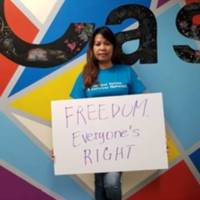
Angela (Narrative 3)
There are an estimated 403,000 people living in conditions of modern slavery in the United States (GSI 2018). The US attracts migrants and refugees who are particularly at risk of vulnerability to human trafficking. Trafficking victims often responding to fraudulent offers of employment in the US migrate willingly and are subsequently subjected to conditions of involuntary servitude in industries such as forced labour and commercial sexual exploitation. Angela Guanzon was living in the Philippines facing the choice of forced marriage or unemployment when she was recruited as a health care worker in California. Upon arrival, Angela was told she owed the recruiter $12,000 and would have to work for 10 years to pay off the debt. She was forced to work long hours on little sleep and received limited food. She was finally able to escape her exploitation when a neighbour recognised the signs of labor trafficking and contacted the FBI. Angela now works with anti-trafficking charities including CAST-LA to educate people on human trafficking.
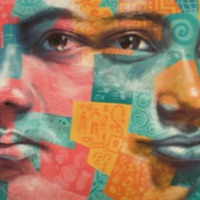
Fathiya
There are an estimated 85,000 people living in modern slavery in Yemen (GSI 2018). Young girls are subjected to child forced marriage, with UNICEF estimating 32% of girls being married before the age of 18. There is currently no legal age of marriage in Yemen and poverty, the practice of dowry and strict social and religious customs are drivers of child marriage in the country. With the onset of conflict within the country, estimates suggest that child marriage is on the rise. Fathiya was forced to marry at 12 years old. Now at 30, she has seven children and suffers with her health due to her early marriage and motherhood.
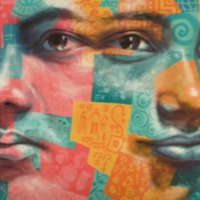
Najla
There are an estimated 85,000 people living in modern slavery in Yemen (GSI 2018). Young girls are subjected to child forced marriage, with UNICEF estimating 32% of girls being married before the age of 18. There is currently no legal age of marriage in Yemen and poverty, the practice of dowry and strict social and religious customs are drivers of child marriage in the country. With the onset of conflict within the country, estimates suggest that child marriage is on the rise. Najla did not know exactly how old she is, but she said that she was married soon after completing her second year in secondary school, which would have made her about 15 or 16 at the time of her marriage. She has been married for seven years and has two children who were likely born before she was 18 years old. She explained how she was denied medical treatment by her in-laws.
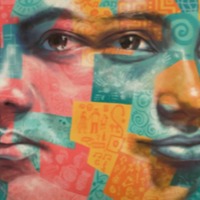
Amal
There are an estimated 85,000 people living in modern slavery in Yemen (GSI 2018). Young girls are subjected to child forced marriage, with UNICEF estimating 32% of girls being married before the age of 18. There is currently no legal age of marriage in Yemen and poverty, the practice of dowry and strict social and religious customs are drivers of child marriage in the country. With the onset of conflict within the country, estimates suggest that child marriage is on the rise. Amal was married when she was 15 and had her only daughter when she was 17.
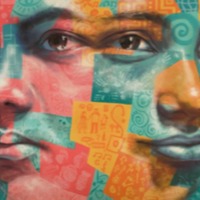
Srey Neth
There are an estimated 261,000 people living in modern slavery in Cambodia (GSI 2018). The country was renowned as a sex tourism destination in the 1990s and this legacy is still prevalent today with women and girls trafficked within the thriving sex industry in Cambodia's major cities. Despite significant attempts to curb CSE, NGOs report the industry has been pushed underground and sex offenders are still able to purchase sex with children through an intermediary rather than more overt selling of sex in brothels. Boys and young men are also vulnerable to sexual exploitation, with many entering the massage industry due to a lack of training and skills. Srey Neth is a young Cambodian victim of human trafficking. In this story she speaks of her experience transitioning from victim to survivor. At 14 she was sold by her mother to a pimp for $300; a week later he sold her virginity for the same price then he forced her to serve 10-20 men per night afterwards. Her refusal was met with beatings or electrocution. Srey Neth was later rescued by police and a non-governmental organization. During her recovery, which unsurprisingly has taken more than five years, she was diagnosed with HIV.
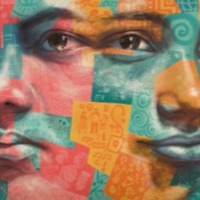
Gowri
There are an estimated almost 8 million people living in modern slavery in India (GSI 2018). India has a population of more than 1.3 billion people, with at least 270 million people still living on less than US$1.90 per day. Existing research suggests that all forms of modern slavery continue to exist in India, with forced labour, including debt bondage, constituting India’s largest trafficking problem. Situations of debt bondage are often aggravated by the need to raise emergency funds or take on loans for health crises. Sometimes entire families are forced to work in brick kilns, rice mills, embroidery factories and agriculture. Gowri and her husband wanted to support their children and pay for their medical bills, so they took out a loan from a factory owner, agreeing to work in his brick kiln and wood-cutting facility to pay off the debt. This turned out to be a trick, and the owner continually increased the loan, violently forcing the family to continue working long hours for him. Even when Gowri paid of her debt and tried to leave to find a safer workplace, her employer attacked her. This abuse continued for nearly 10 years, until IJM was able to send rescue. Today, the slave owner is standing trial, and the family is safe.
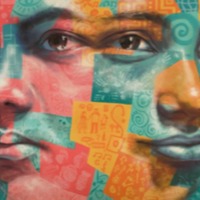
AR
There are an estimated 31,000 people living in condition of modern slavery in Israel (GSI 2018). Women from Eastern Europe, China and Ghana, as well as Eritrean men and women are subjected to sex trafficking in Israel. People are often lured through the promise of seemingly legitimate jobs, only to be subjected to commercial sexual exploitation upon arrival. Here AR tells of her experience of medical care while being held in a brothel in Israel.

Marcela Loaiza
It is estimated that 290,200 people are living in modern slavery in Japan. The country is the destination for men, women and children trafficked for forced labour and commercial sexual exploitation. The majority of trafficking victims are foreign women who migrate willingly seeking work, but find themselves trapped in debt bondage, having to work in domestic and sex work to pay off fees incurred. Despite warning from the U.N., it is reported that human trafficking is on the rise in Japan. Marcela couldn’t afford to pay her daughter's hospital bills when she rang an agent who had recently offered her a job as a professional dancer abroad. The agent paid off the hospital bills and arranged for Marcela to travel to Tokyo. However, upon arrival Marcela was told that she would have to work providing sexual services to men in order to pay off the debt incurred from her travel costs. After 18 months, Marcela was assisted by one of her clients and was able to escape, making her way to the Colombian embassy in Japan and eventually back home to her daughter.
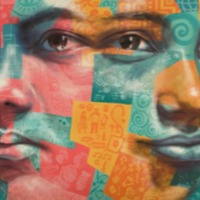
Aziz
Afghanistan is a source, transit, and destination country for men, women, and children trafficked for the purposes of forced labor and commercial sexual exploitation. Afghan boys and girls are trafficked within the country for commercial sexual exploitation, forced marriage to settle debts or disputes, forced begging, as well as forced labour or debt bondage in brick kilns, carpet-making factories, and domestic service. Afghan children are also trafficked to Iran and Pakistan for forced labour, particularly in Pakistan’s carpet factories, and forced marriage. Aziz began weaving carpets in his home at the age of 6 years old. He and his 11 siblings are the breadwinners of their family and though they go to school, they must work before and after, and work full days during the winter holidays. Aziz has been injured several times and has developed a chronic cough due to his work.
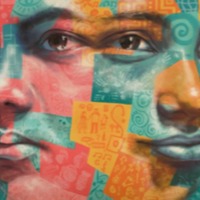
Roxana
Roxana is originally from Mexico, but was forced into slavery in the US performing sex work from the age of 14. In the US, the Trafficking Victims Protection Act of 2000 (TVPA), as amended, prohibits all forms of human trafficking, but there are still an estimated 57,700 people living in slavery within its borders. According to the Global Slavery Index, “The U.S. attracts undocumented workers, migrants, and refugees, who can be at particular risk of vulnerability to human trafficking upon their arrival and during their stay in the U.S. Research undertaken on vulnerable migrant labourer populations in San Diego, California, and in North Carolina suggests that these populations often include undocumented seasonal labourers who experience significant language barriers, cultural non-assimilation, and fear of deportation.” Here Roxana discusses how medical services she accessed while in slavery failed to seize opportunities to understand her situation and act appropriately to remove her from those who enslaved her. The US Department of Justice estimates that of the 14,500 and 17,500 foreign-born individuals trafficked into the US annually, some 80 percent are female, and 70 percent of these women end up as sex slaves. Feeder countries include Albania, the Philippines, Thailand, Mexico (many from the central region of Tlaxcala, a haven for modern-day slave traders), Nigeria, and Ukraine. Often the women are forced to work to pay off the debts imposed by their smugglers—debts ranging from $40,000 to $60,000 per person. They might perform 4000 acts of sexual intercourse each year to meet their quota, at $10 to $25 per act.
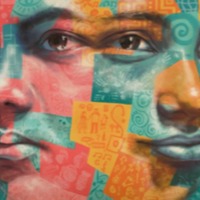
Celena
Celena is originally from Mexico, but was forced into slavery in the US performing sex work from the age of 19. In the US, the Trafficking Victims Protection Act of 2000 (TVPA), as amended, prohibits all forms of human trafficking, but there are still an estimated 57,700 people living in slavery within its borders. According to the Global Slavery Index, “The U.S. attracts undocumented workers, migrants, and refugees, who can be at particular risk of vulnerability to human trafficking upon their arrival and during their stay in the U.S. Research undertaken on vulnerable migrant labourer populations in San Diego, California, and in North Carolina suggests that these populations often include undocumented seasonal labourers who experience significant language barriers, cultural non-assimilation, and fear of deportation.” Here Celena discusses how medical services she accessed while in slavery failed to seize opportunities to understand her situation and act appropriately to remove her from those who enslaved her. The US Department of Justice estimates that of the 14,500 and 17,500 foreign-born individuals trafficked into the US annually, some 80 percent are female, and 70 percent of these women end up as sex slaves. Feeder countries include Albania, the Philippines, Thailand, Mexico (many from the central region of Tlaxcala, a haven for modern-day slave traders), Nigeria, and Ukraine. Often the women are forced to work to pay off the debts imposed by their smugglers—debts ranging from $40,000 to $60,000 per person. They might perform 4000 acts of sexual intercourse each year to meet their quota, at $10 to $25 per act.